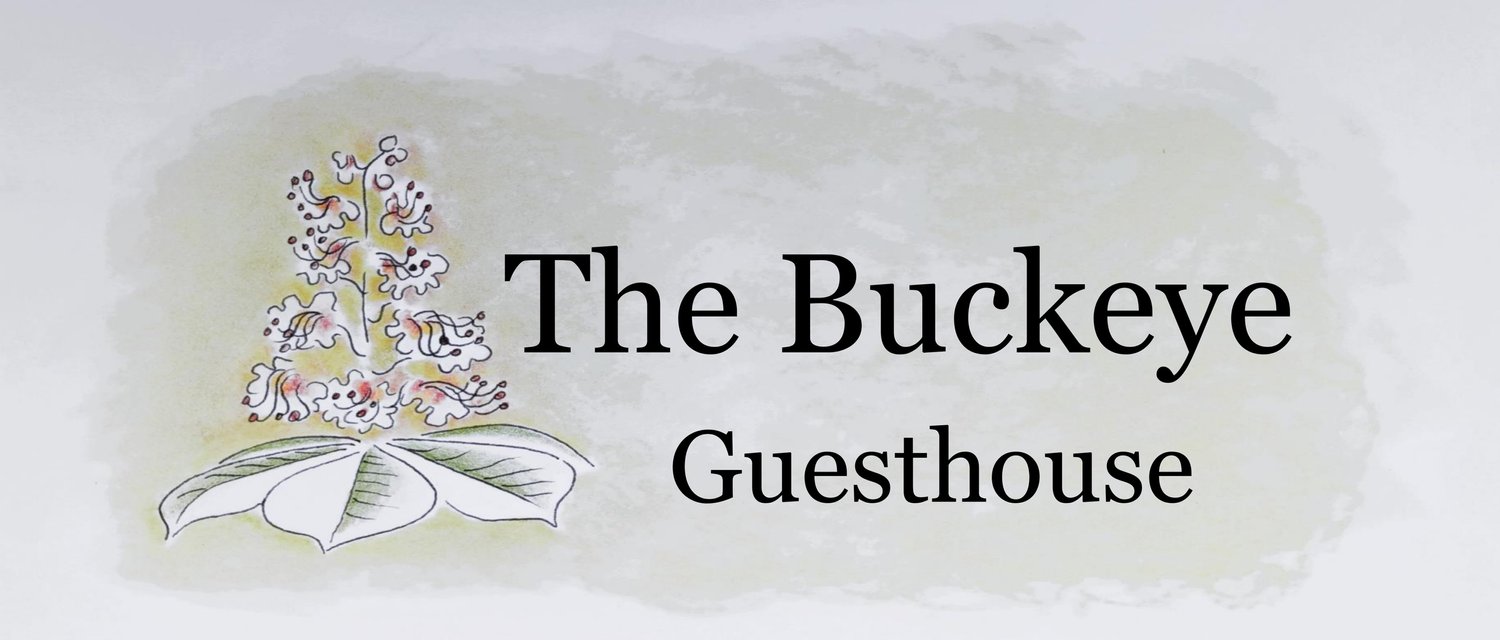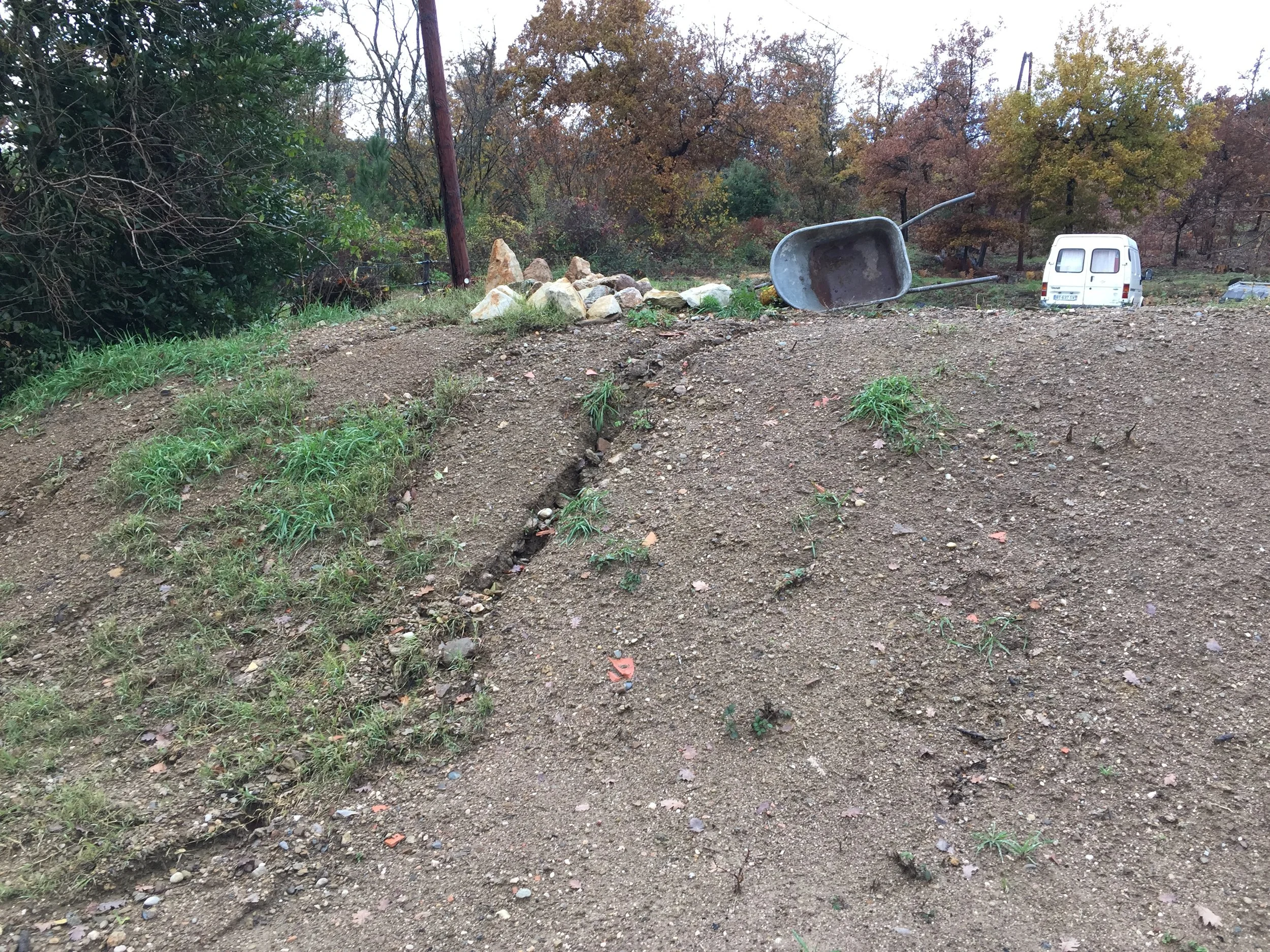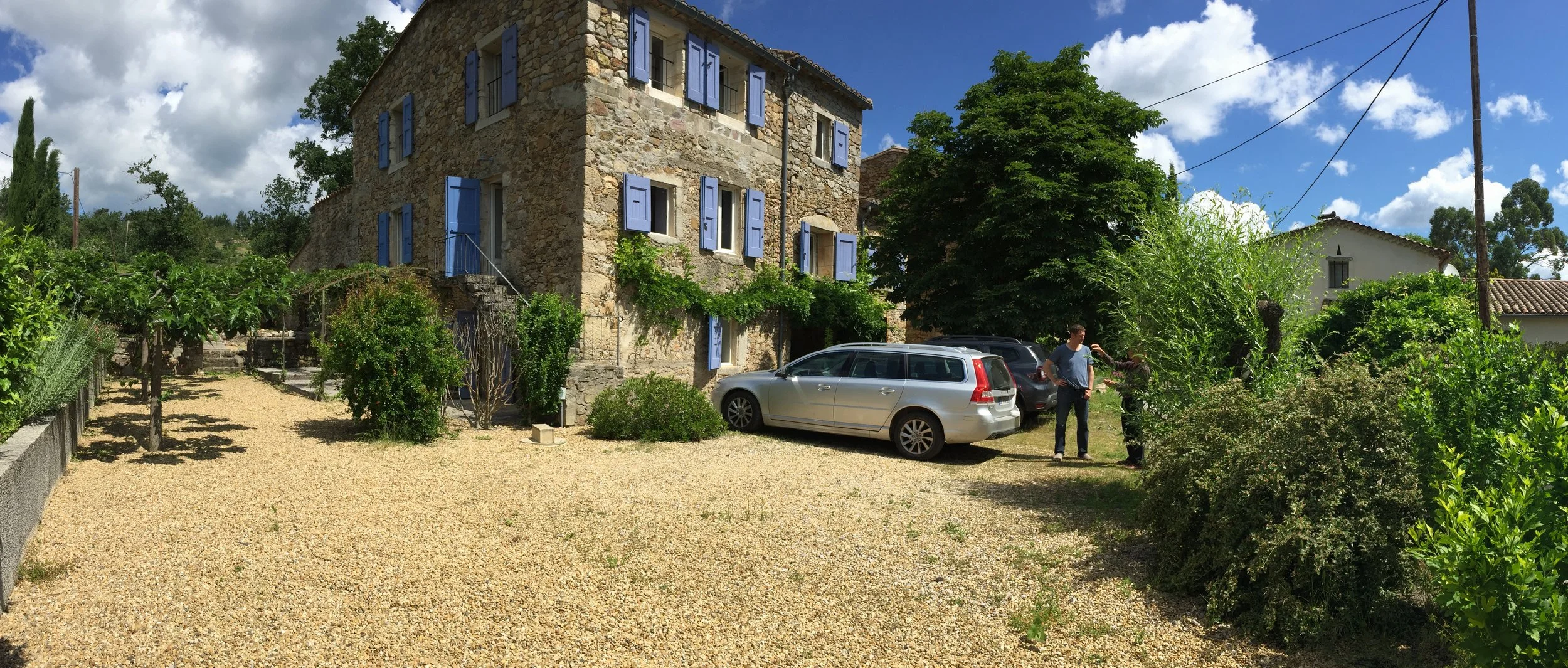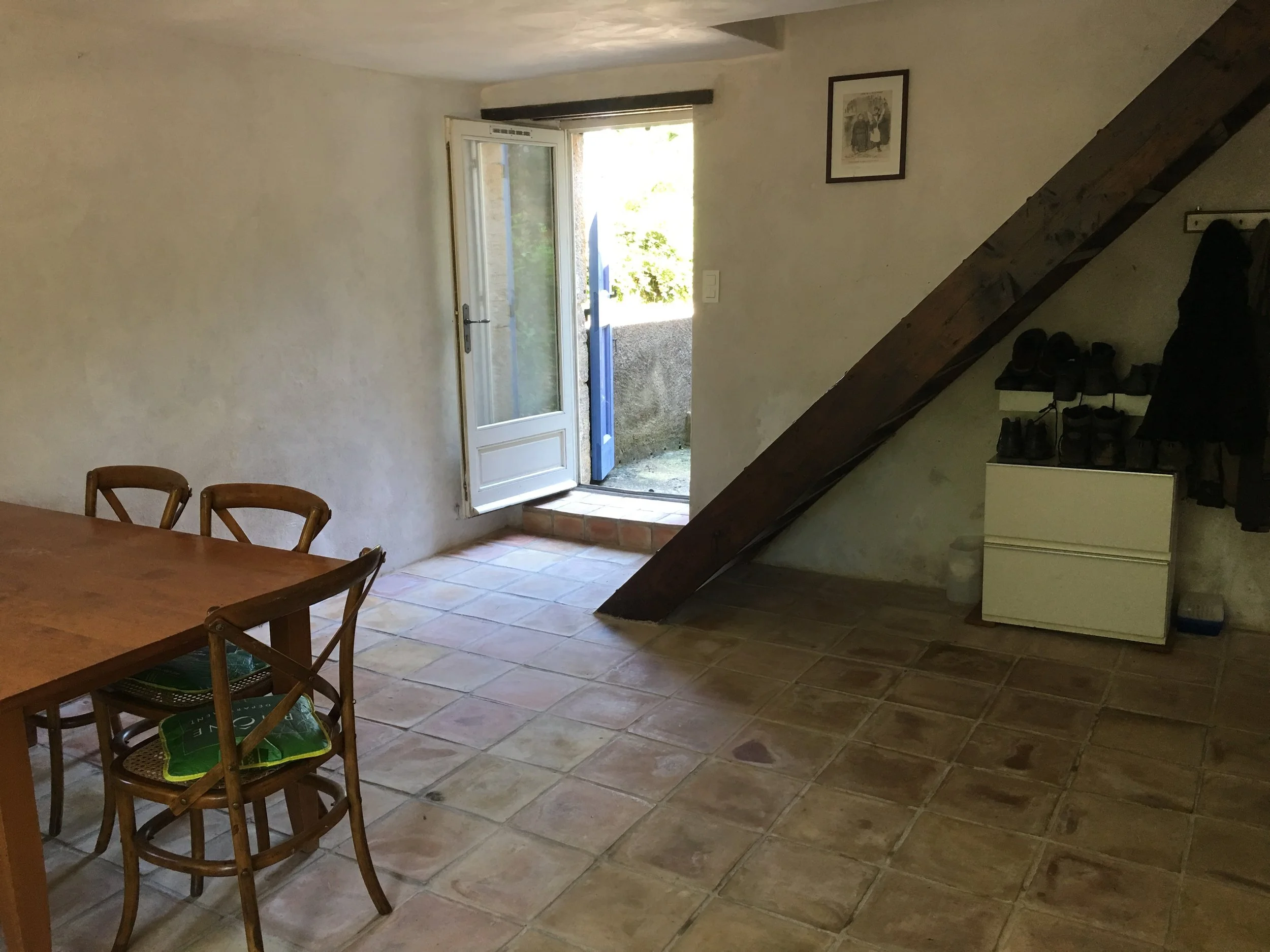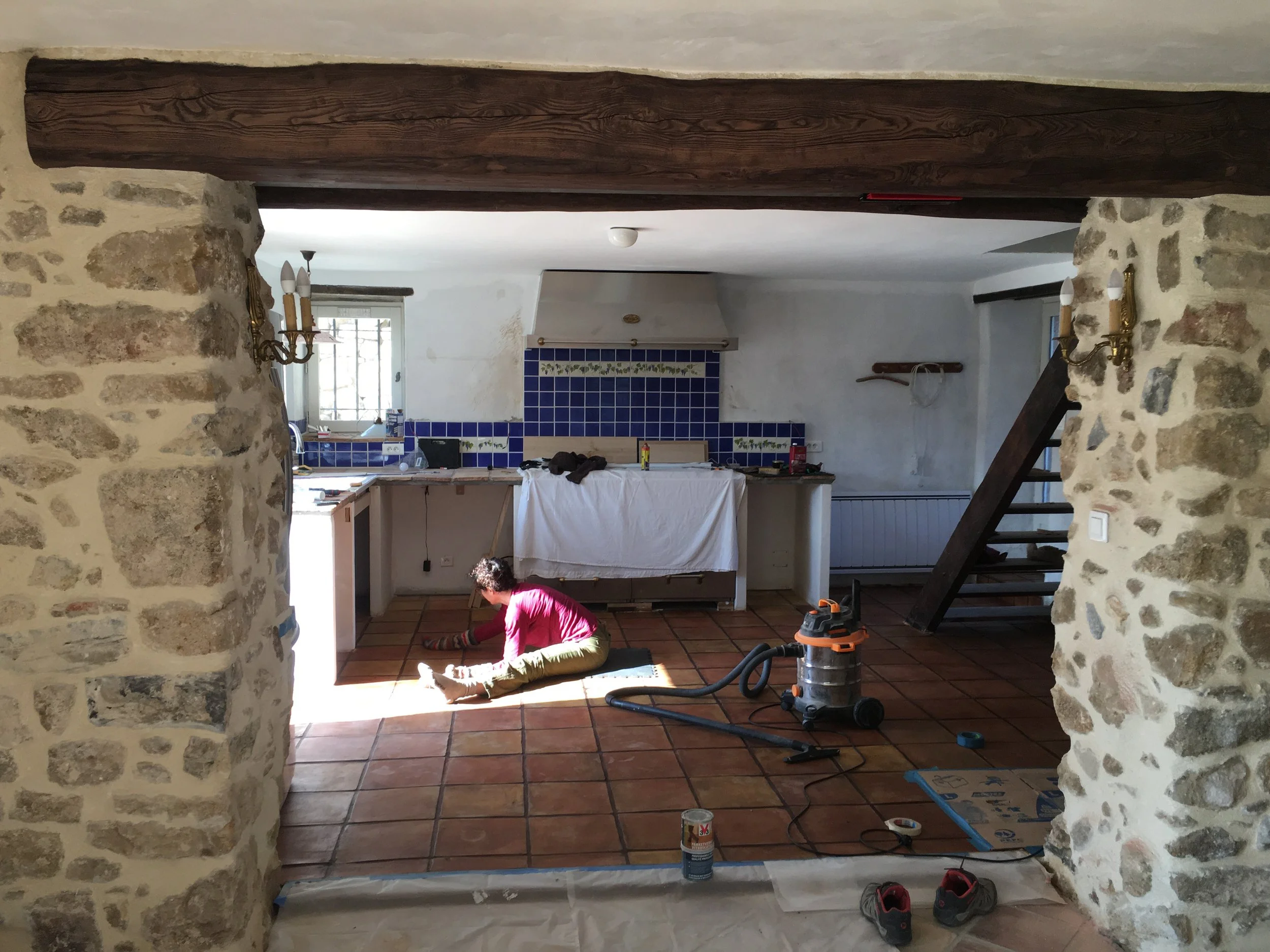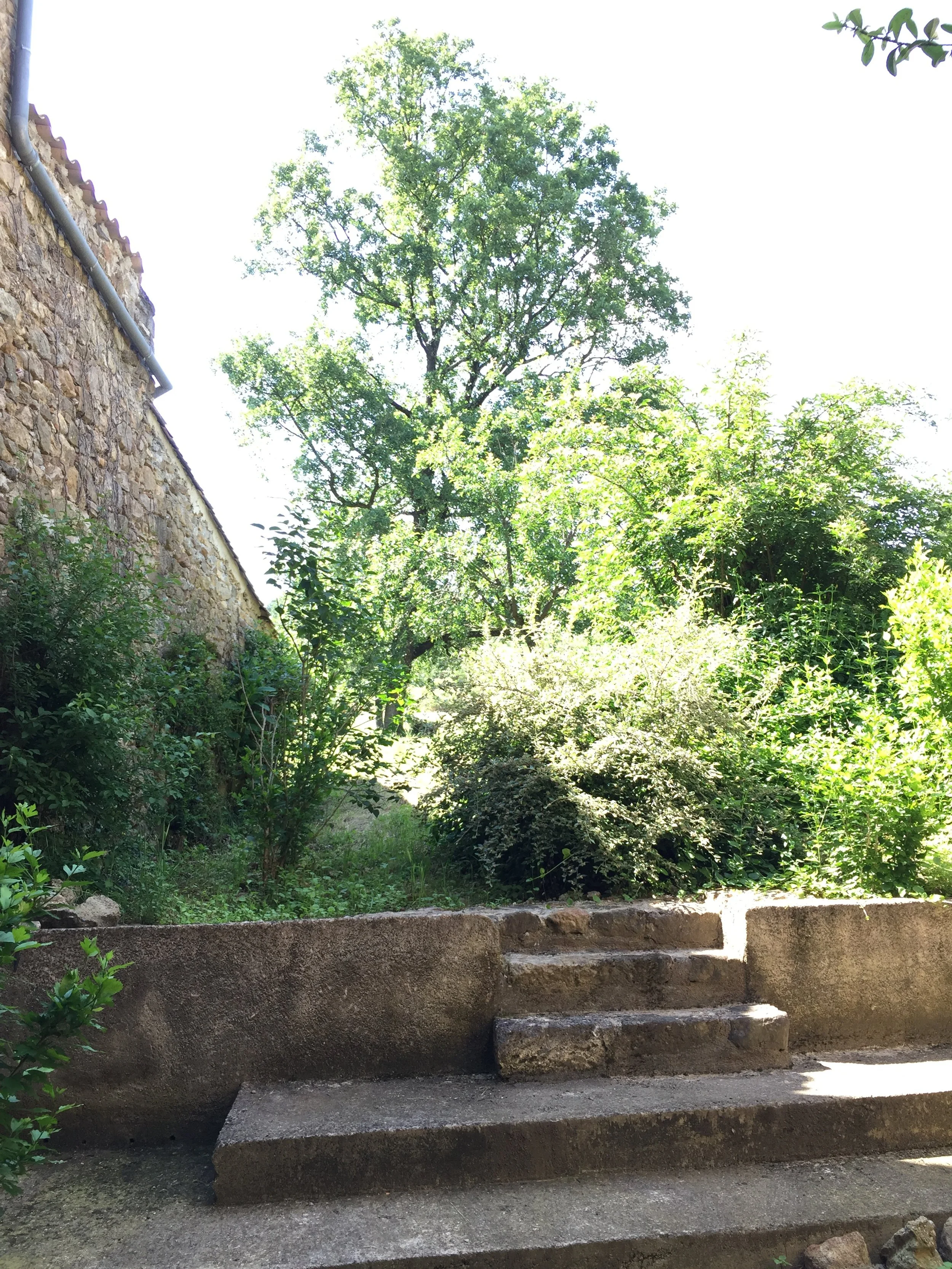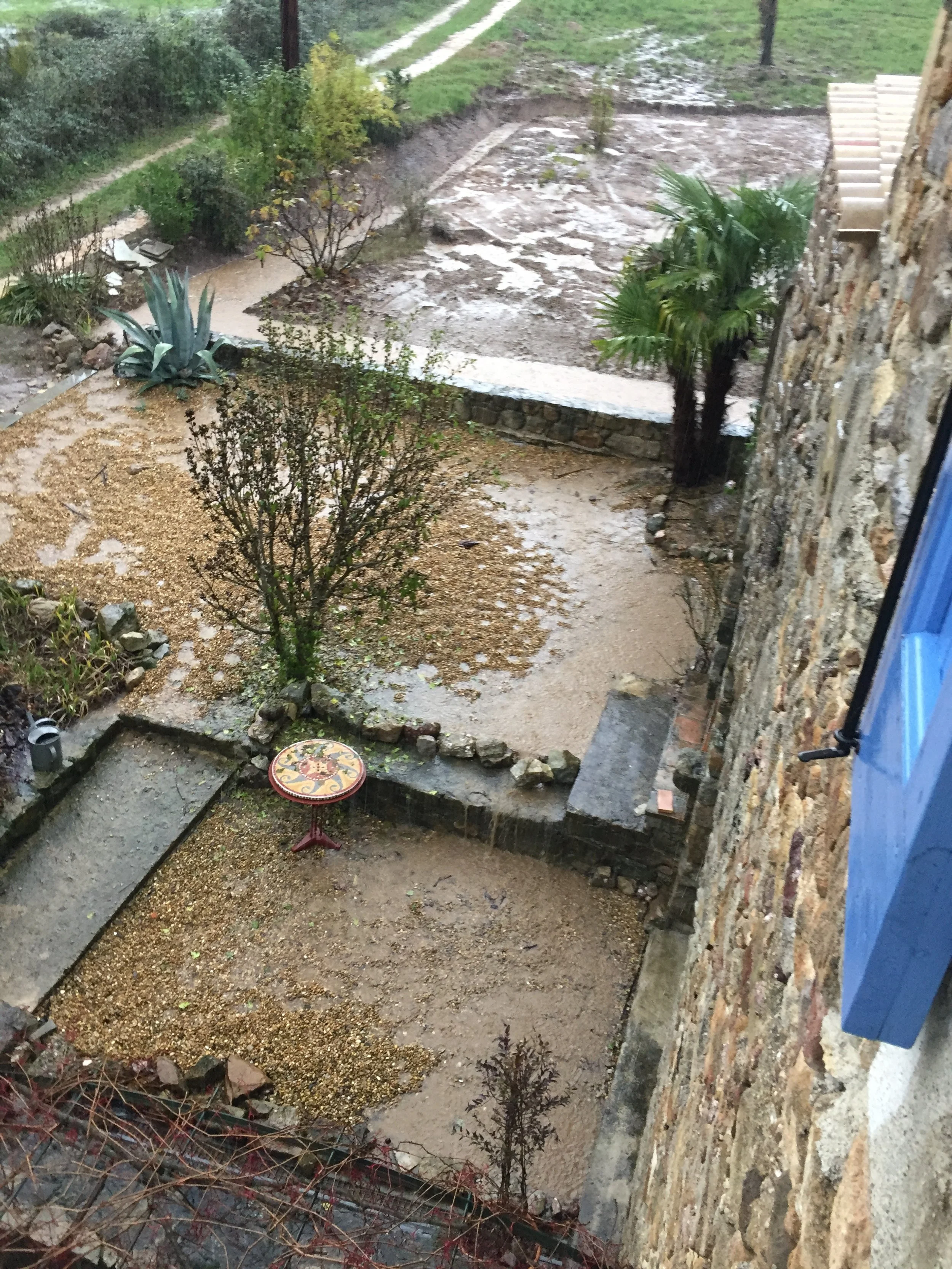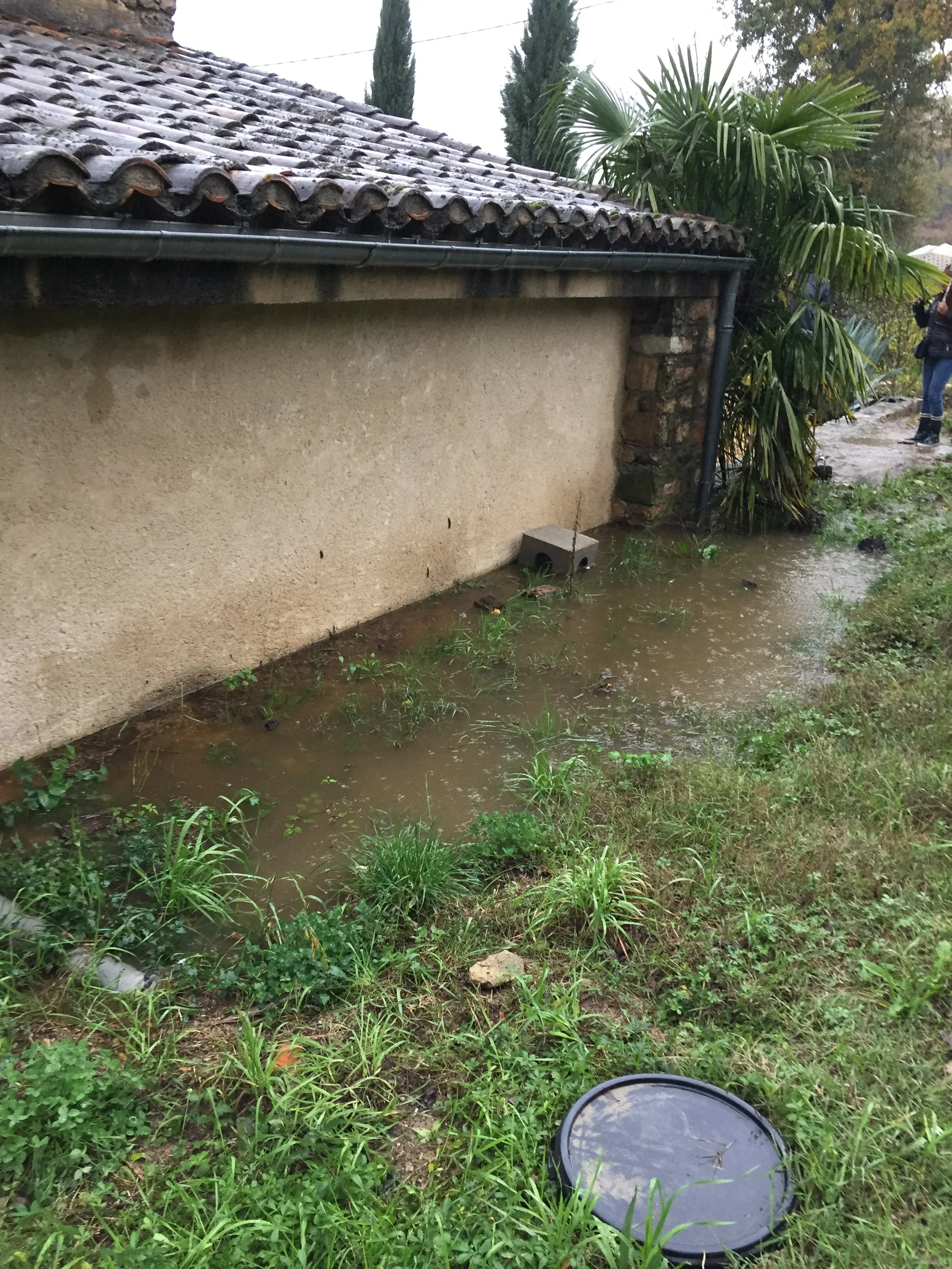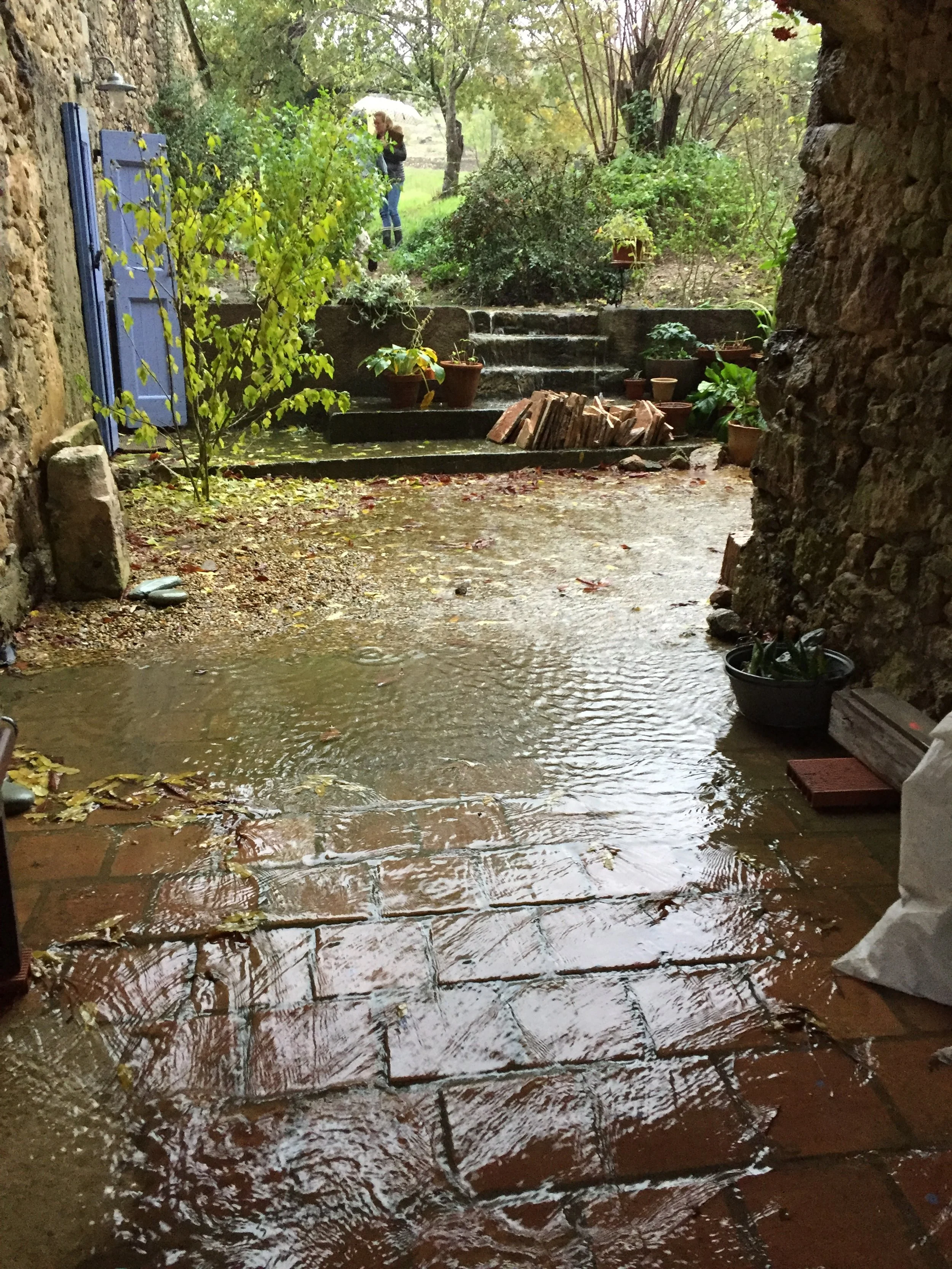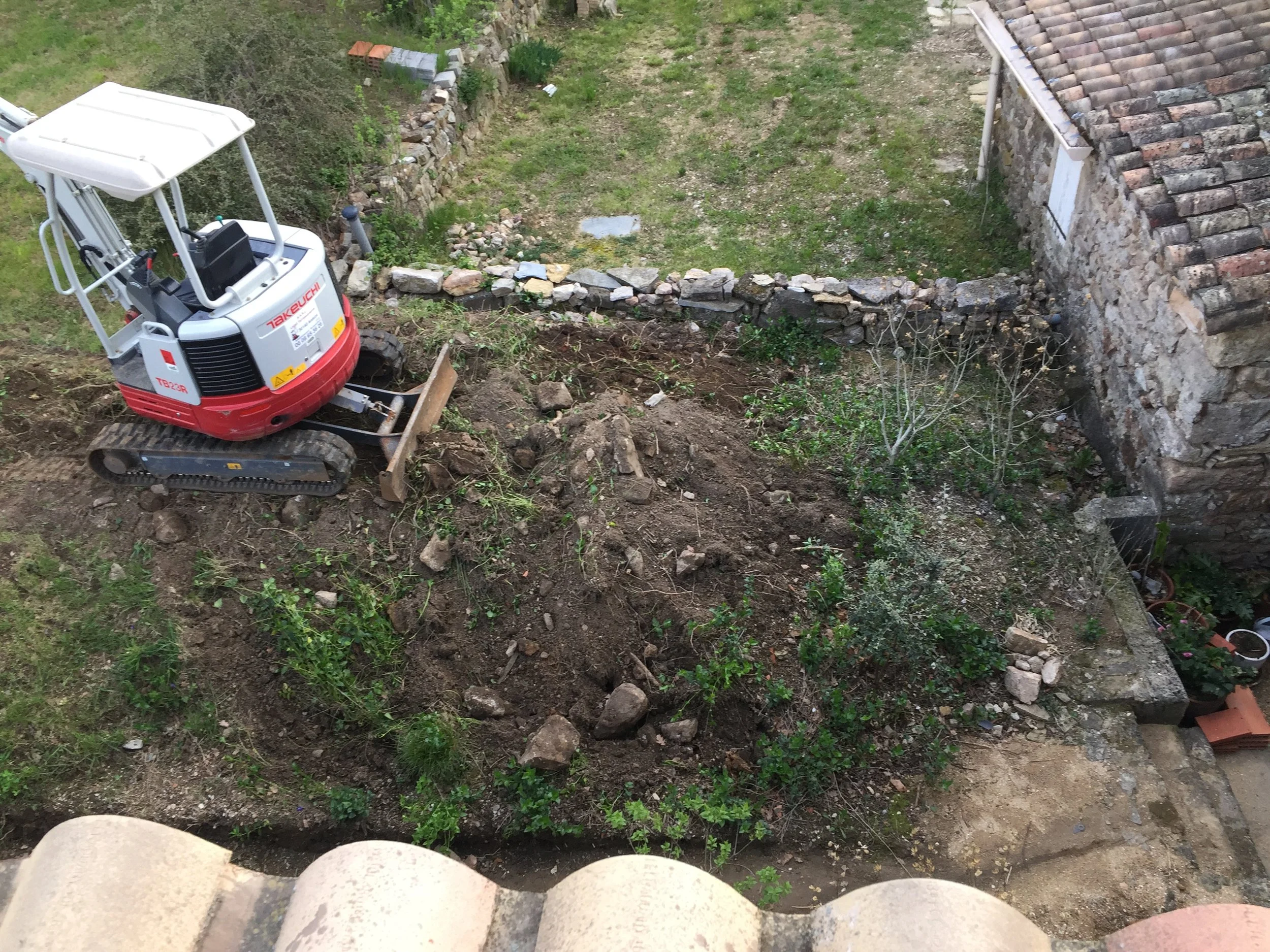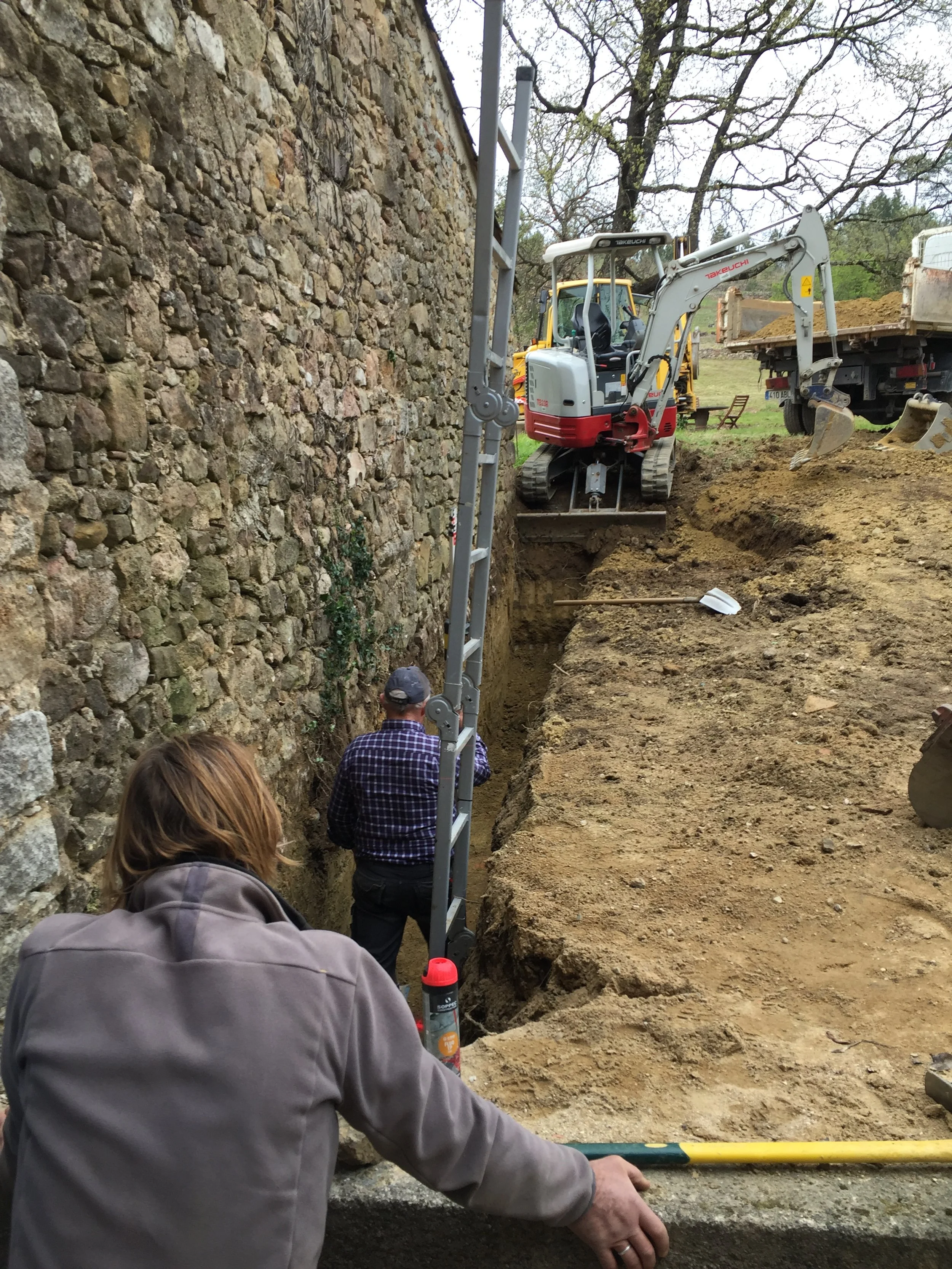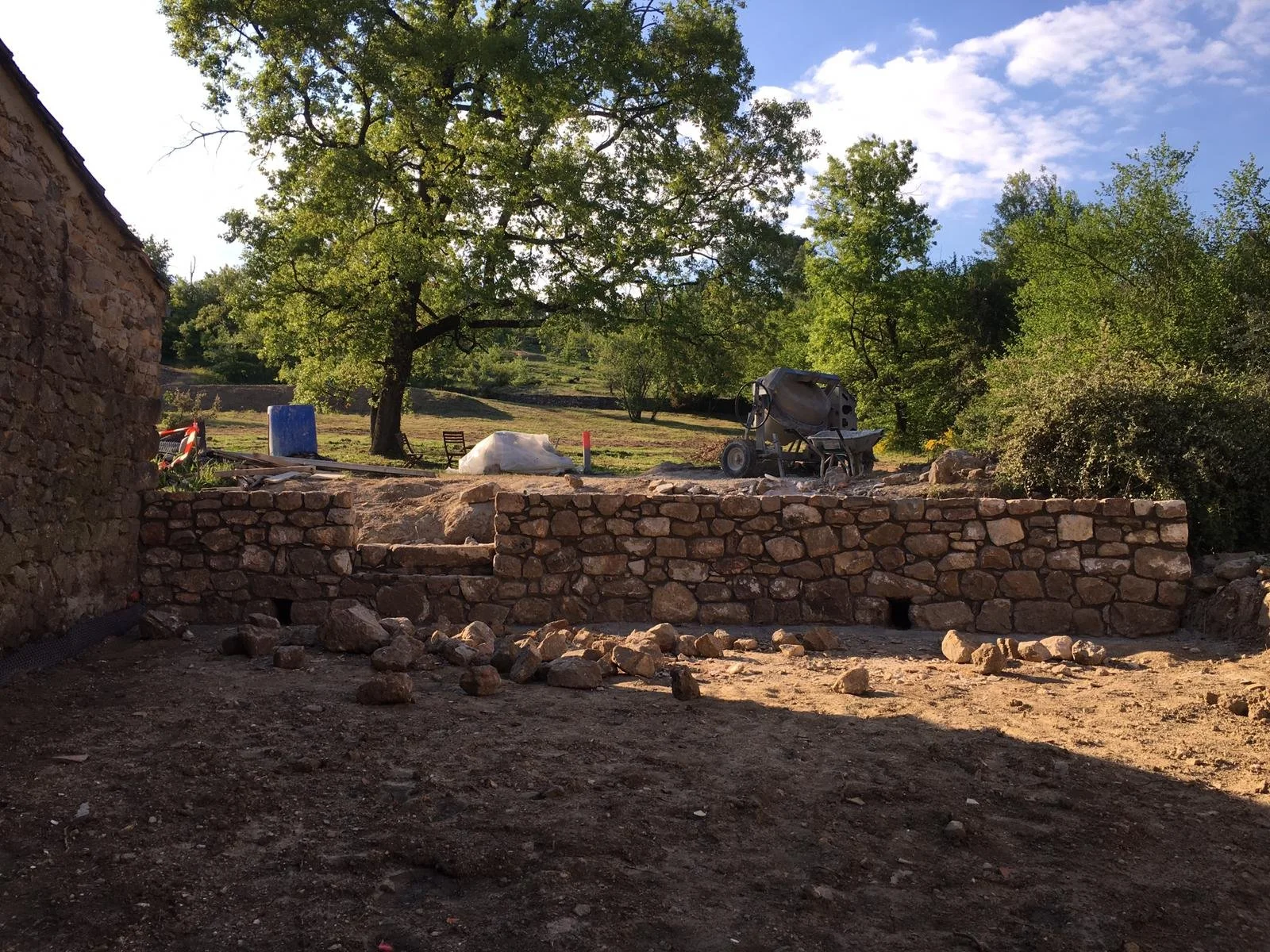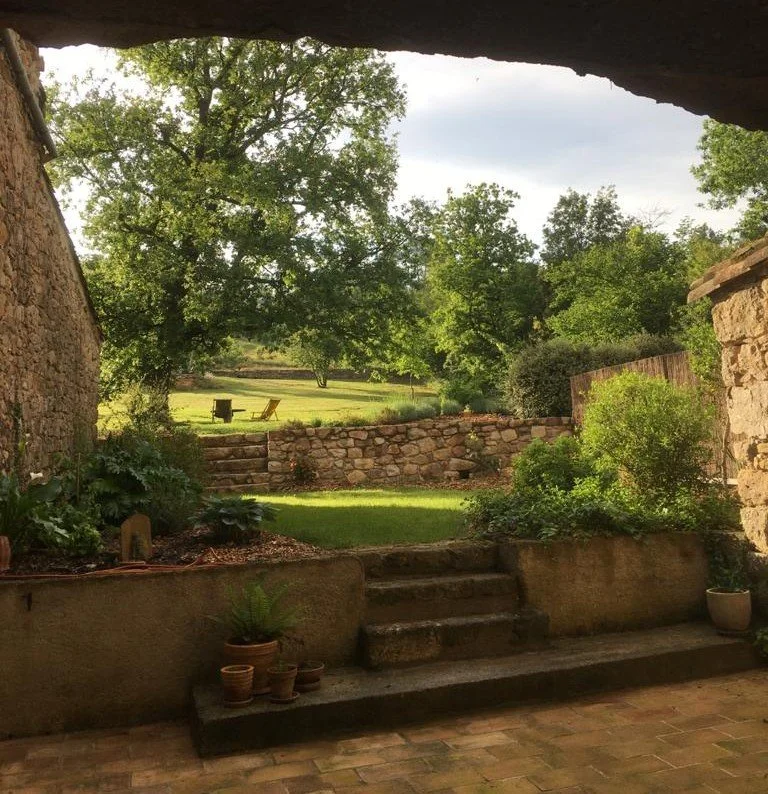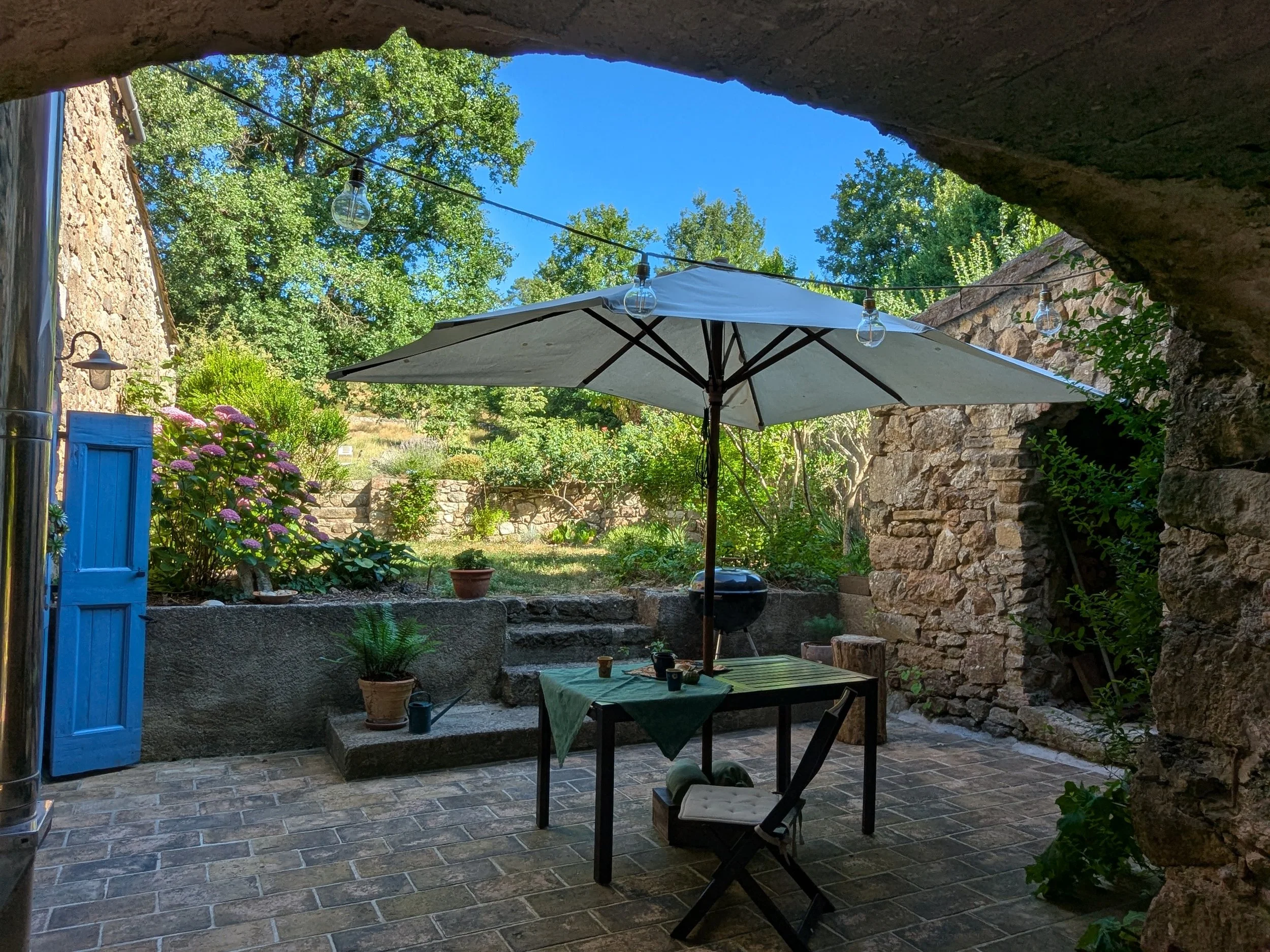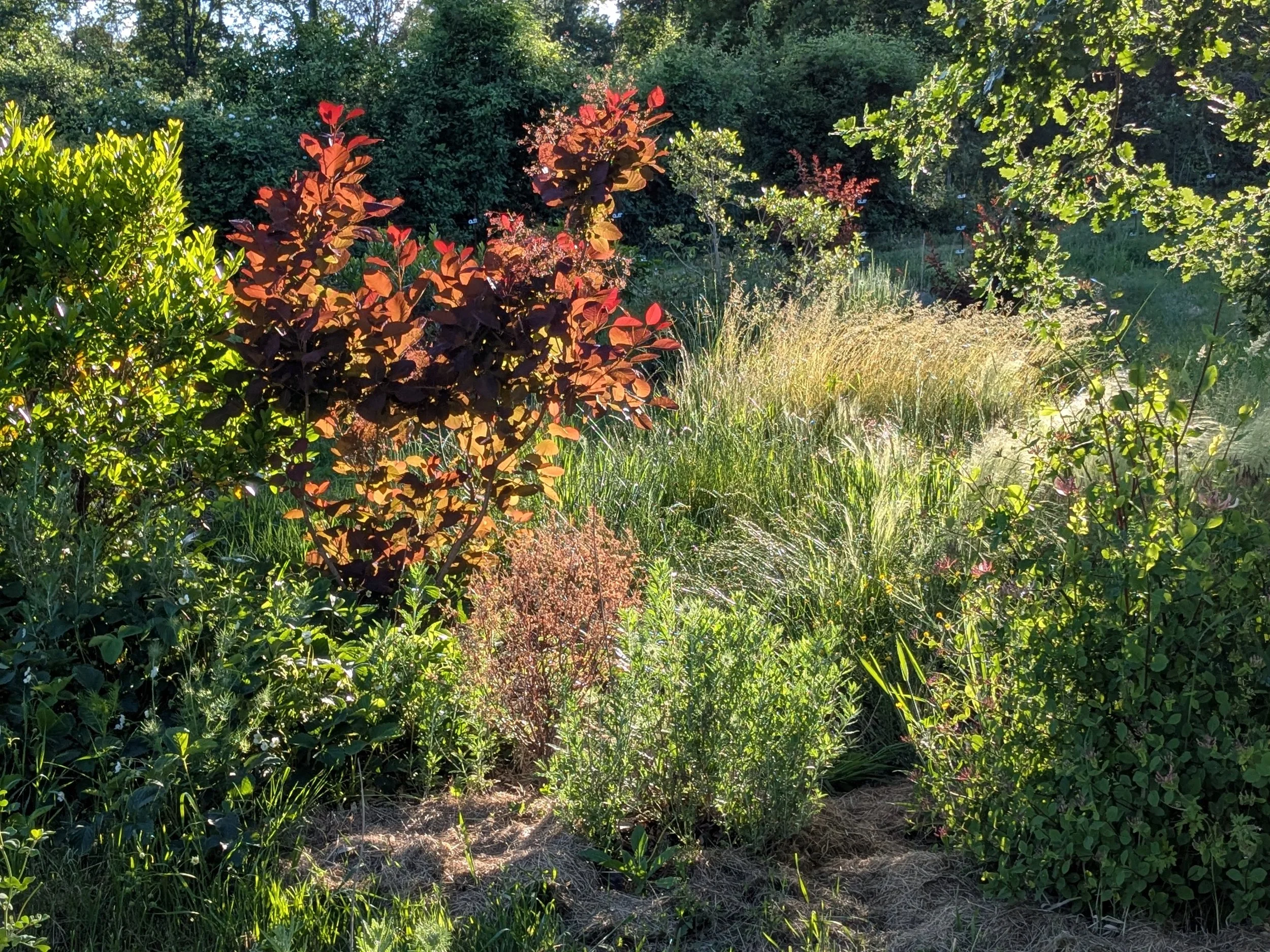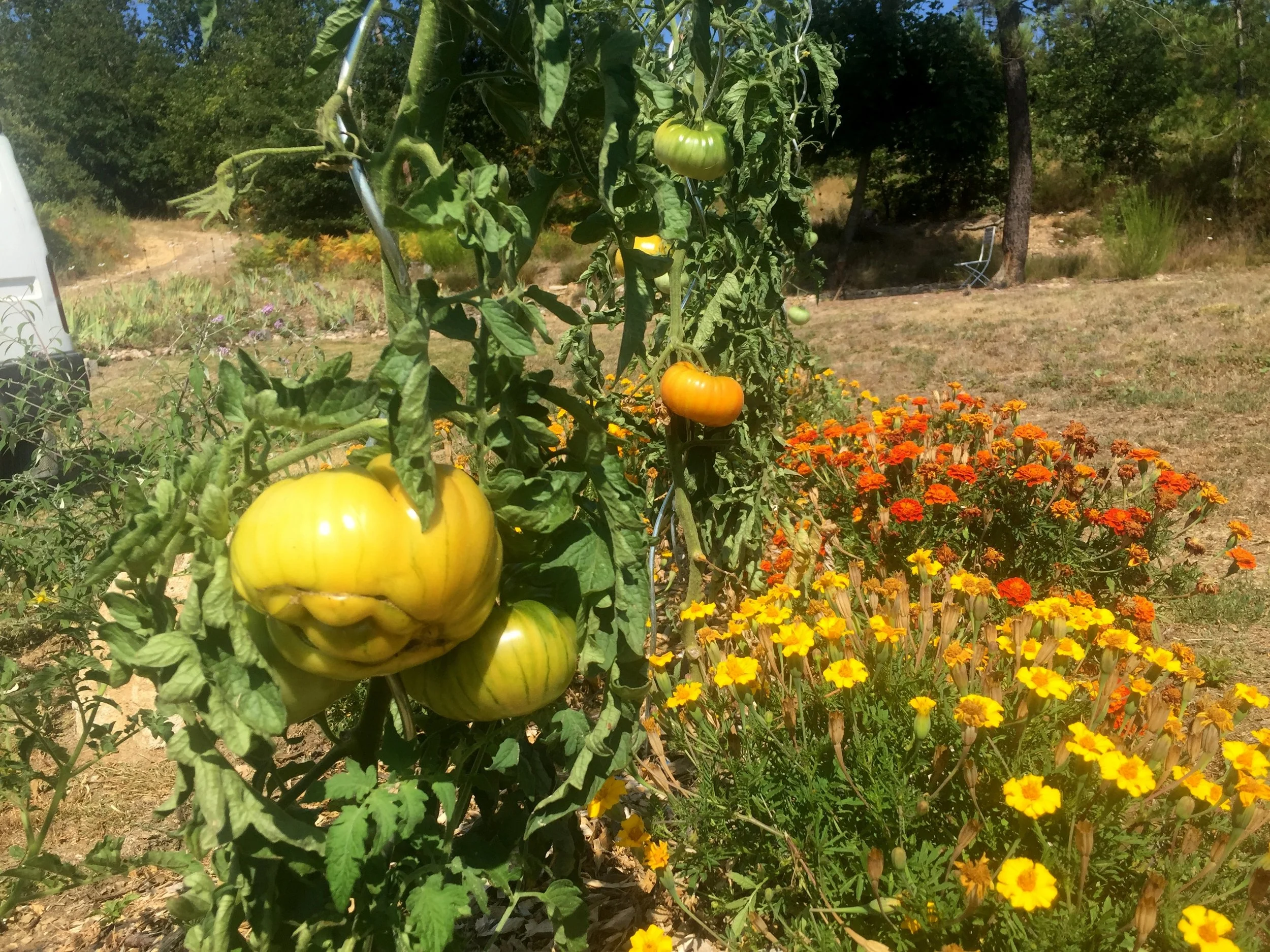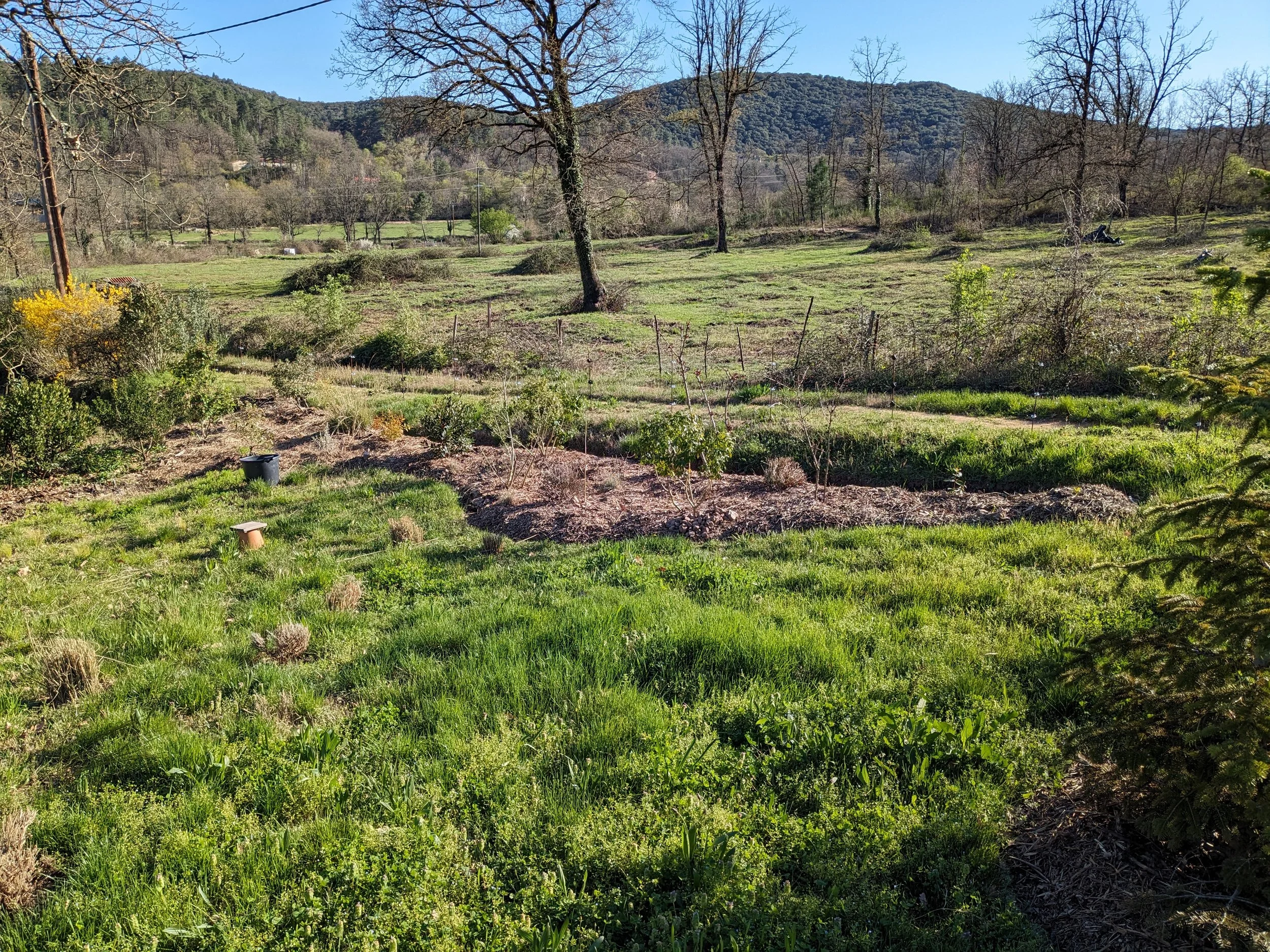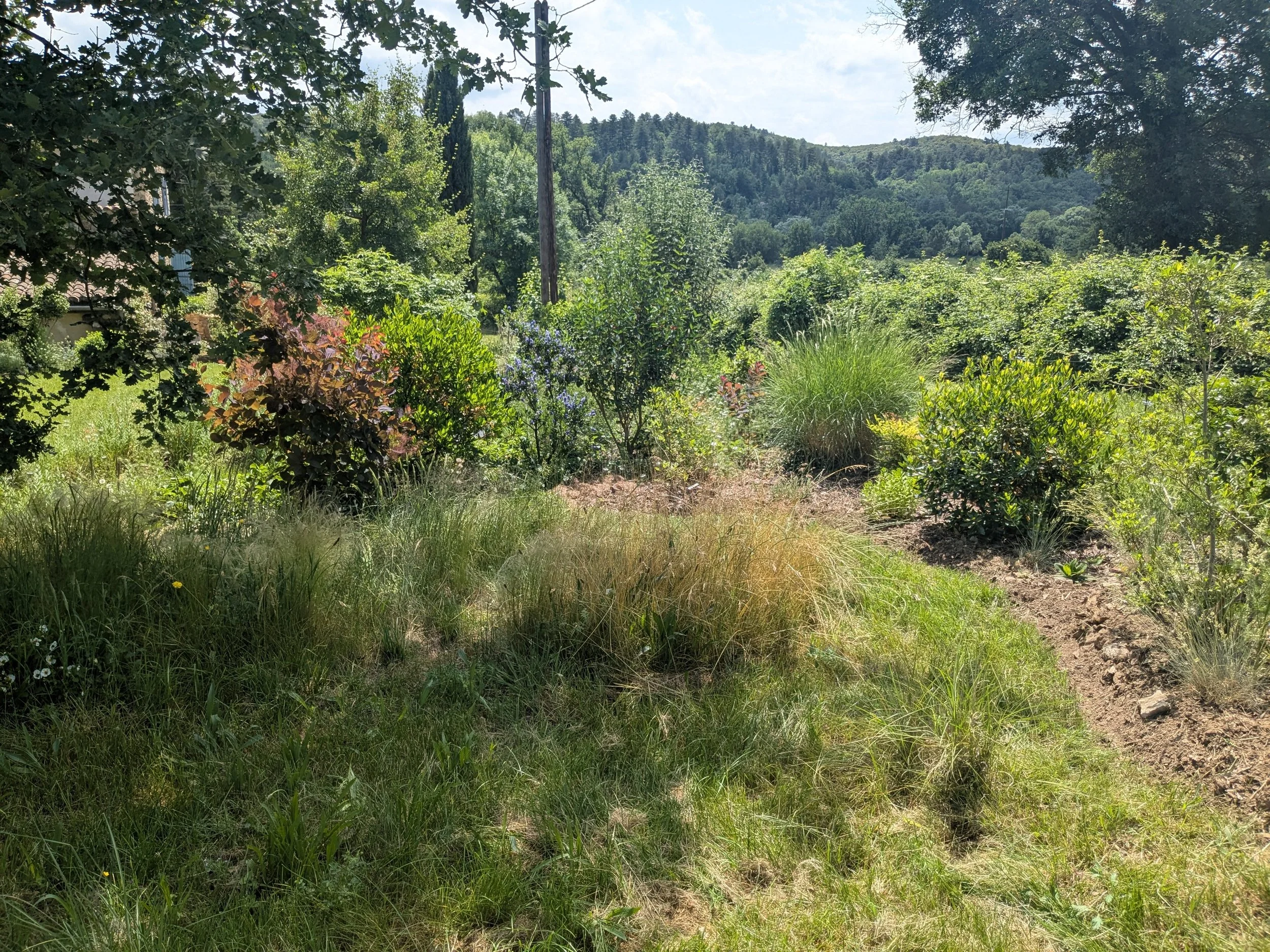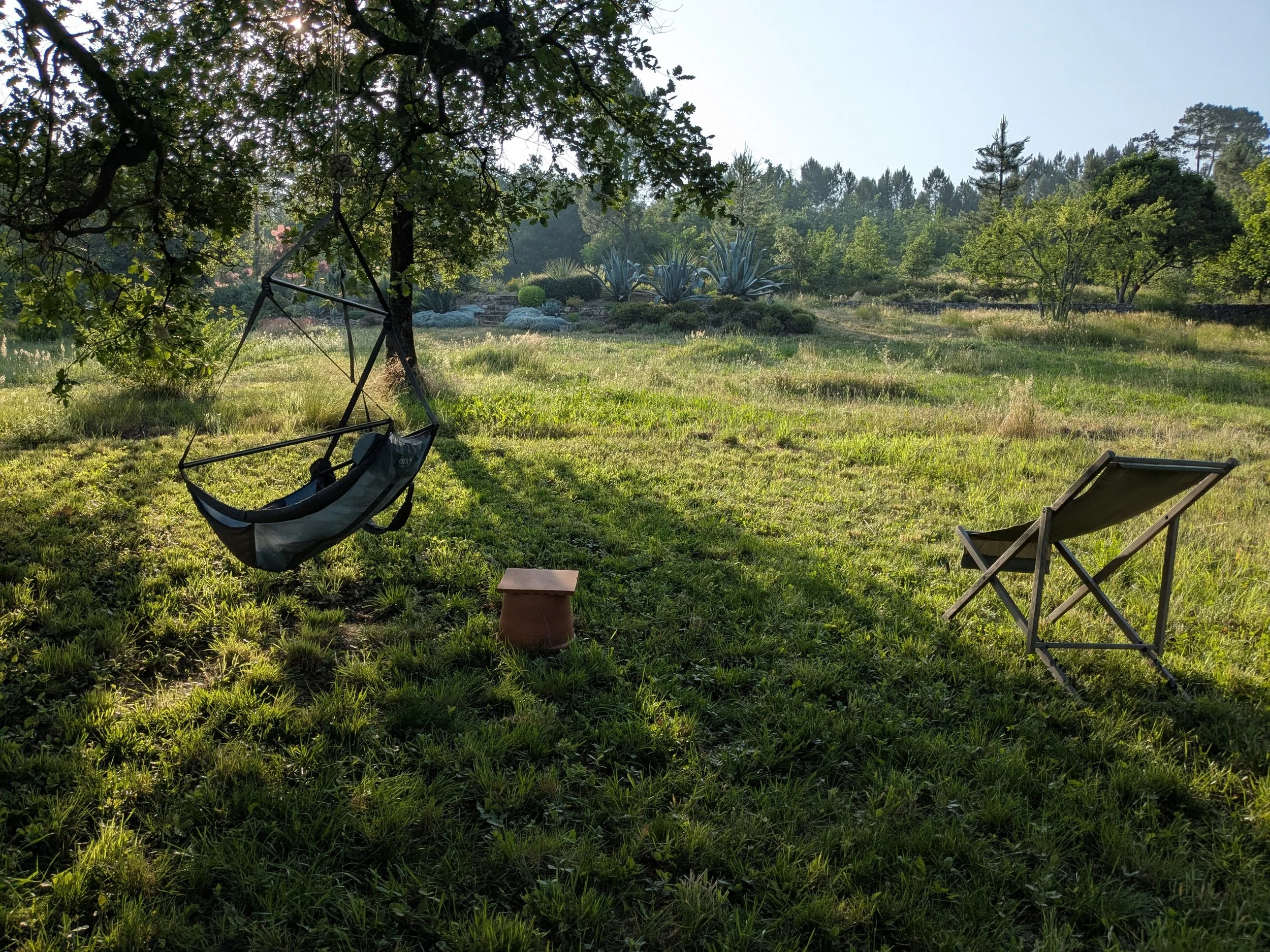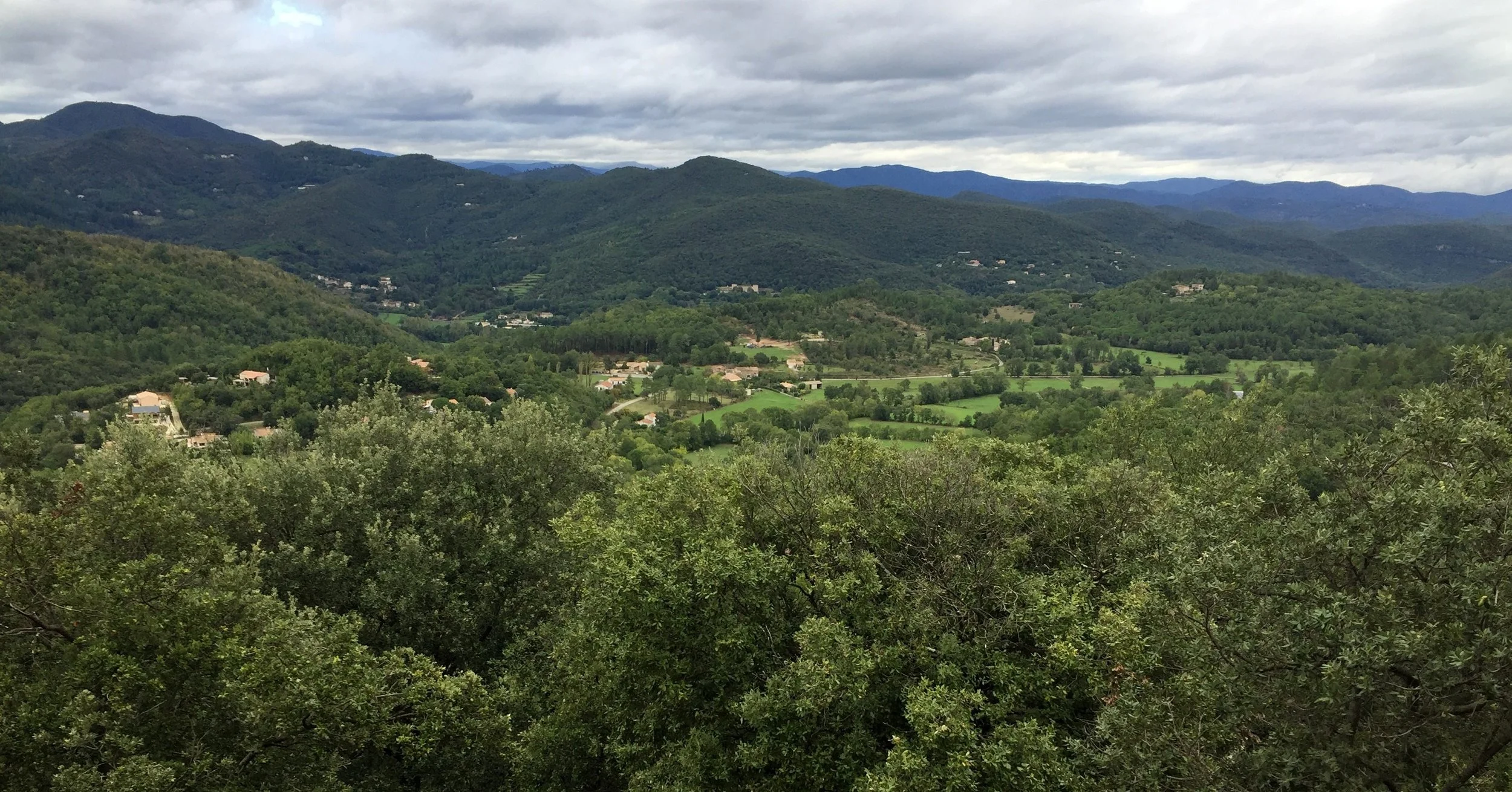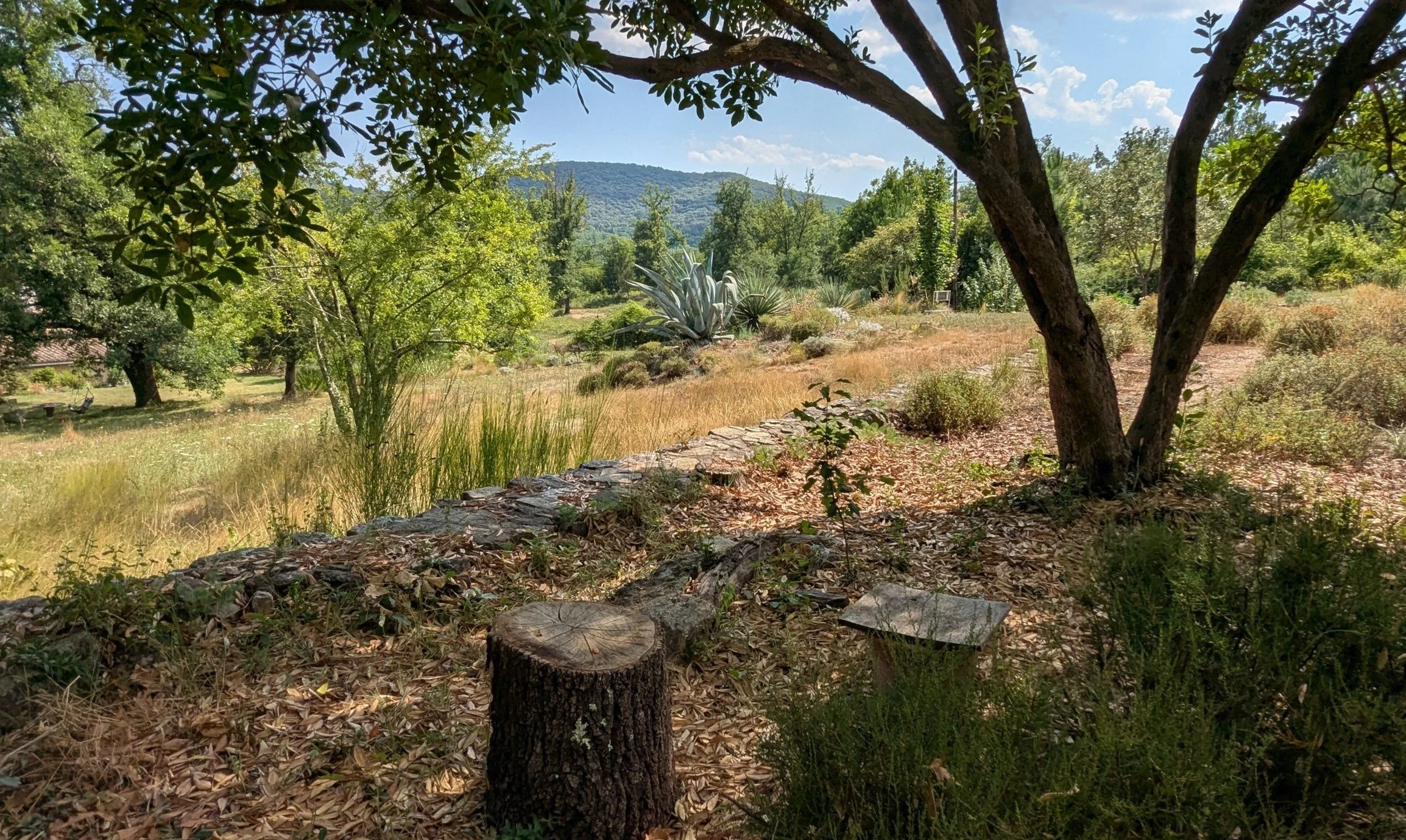
Sustainable Living
2018 sitework after flooding
Site restoration
My ecological work here is in restoring the harmonic balance of this habitation with its land and its community of living creatures. The house was built gradually by successive generations of people who worked the fields long ago. It is part of a hamlet that retains its graceful organic quality, as if it grew from the land. In the modern era when the inhabitants were no longer farmers, there was a half-century of degradation of the site’s ecological balance. This was followed by several abortive development projects where benign house modernization was paired with continued negligence of the land. In the early 21st century new owners used the house for a vacation home and for almost 2 more decades the serious problems causing soil depletion persisted.
2025 restored prairie bordered with native plant beds
2018 the site eroded and soil degraded
Exhuberance - 2025 xeriscape with native plants, restored prairie grasses, and erosion control
As an architect and artist, my experience is that the love of beauty is inseparable from the pursuit of well-being. My methods of working follow both a practical ecology and an aesthetic intuition.
2018
House surrounded by gravel parking and planting dominated by several typical nursery species
6 YEARS LATER:
Micro-climates created with landscape elements, fostering variety of species and landscape stories; great diversity of native trees and shrubs create natural hedging and habitat for insects & critters.
Healthy Indoors
2018 Future kitchen : Old tiles unfinished, chalky, not maintainable
2019 Floors stripped and waxed, stone wall stripped of plaster, reclaimed hardwood beams installed for new opening.
Clean Air Quality
Natural finishes such as wax-finished terra cotta floor
Plaster and natural stone walls
Wood furnishings and cabinets
Natural fiber house linens (cotton and linen)
Natural fiber rugs
The house breathes – good air circulation
Mold & mildew free - proper drainage around the house
Renovated with reclaimed, noble building materials
Floors in terra cotta
Exterior patios in reclaimed terra cotta ceiling tiles called “parefeuilles”
Reclaimed hardwood beams
Reuse of all stones found on site or removed during renovations
Furnished with antique or classic furniture rather than new
2018 Just after purchase the house flooded 2 times during November rains
Solutions implemented:
Ditch across site at base of steepest part of slope.
Swales and berms sculpted in landscape to direct water away from house.
“French drain” installed where slope meets the building footprint.
Basement waterproofed to 6’ below grade.
Terracing surrounding house redesigned or built new with proper drainage.
Mold and Mildew Free House
Waterproofing of basement, and proper grading for good drainage are essential for a healthy environment. This also creates pleasant pathways and circulation for all creatures and helps plants to thrive.
2020 Site drainage work complete and plantings begun
Outdoor space is designed integrally with the living space to foster awareness and contact with natural elements.
For the body’s natural acclimation to the seasons there are transition zones from outdoors to indoors: covered, open-air porches and patios.
Shade trees create passive air conditioning for outdoor spaces.
The ensemble of house and garden nurtures with beauty.
Practices and Strategies for a Sustainable Garden
100% organic gardening: no use of pesticides or herbicides; for housekeeping, use of only benign, organic household cleaning products
Composting practiced methodically and thoroughly
Drip irrigation exclusively, for all beds and vegetable plot
Mulch cover of 5 cm minimum for all planting beds
Selection of local, endemic, and well-adapted plants with low- or no-irrigation requirements.
Most of my plants are wild-found in this region, and not exotic or hothouse nursery varieties. Those that are not local in origin are selected for their similar climatic adaptation. I have extensively researched & implemented xeriscape plantings for 30 years
Plant selections ensure melliferous blooms during all seasons. Great variety of plants means great variety of insects, animals, and micro-organisms.
Creation of diverse micro-climates (using walls, shade plants, and berms) is aesthetically pleasing and promotes greater biological diversity on site.
Manual maintenance with hand tools
One woman maintains an acre of beautiful landscaping.
No leaf blowers allowed on site.
Leaves and cut grass are composted or used for mulch.
Edging and weeding are maintained using a spade and a trowel.
Chipper-shredder is used minimally because the collective solid waste service recycles green garbage, turning it into mulch. On site clippings that can’t go in the compost pile are taken to the dump, where mulch from the collective is loaded to be spread here.
A variety of aromatics, medicinals, food plants and fruit trees are integrated into the landscape and into all planting beds.
There is a small vegetable plot. When growing vegetables in a private garden there is often more production than can be eaten. Vegetable plants have high water requirements and exhaust the soil. I support the organic farm next door to supplement my modest vegetable production.
Prairie Grassland Advantages over Lawn or Mono-turf
Grass cutting is kept to a minimum
No irrigation of open spaces
Significantly less machine mowing = peace and quiet
Greater plant diversity and health
Greater diversity of insects and animals
Controls erosion through perennial grasses with large root systems
Beautiful variety of seasonal colors
Conventional Hedge
across the street – a landscape professional uses a motorized hedger to trim every few weeks - noisy and labor intensive.
Natural or Wild Plant Hedge - 6 years after first plantings
Wild Plant Hedge advantages over Conventional Hedge
Design of native plant, “wild” hedge avoids clipped hedges. Pruning is done with hand-operated pruners, not motorized hedgers.
Low water usage
No machine hedging-trimming
Greater plant diversity and health
Year-round flowers and berries due to variety of plants
Greater diversity of insects and animals
Comestible and medicinal plants (human-uses) are incorporated
Allows greater porosity of branches and leaves where animals and birds can shelter
Allows contact with neighbors while also providing privacy screening
Conventional Hedge
Wild Hedge
Erosion prevention: retaining edges, drainage swales and terracing
Clump-grasses planted in prairie
Mulching of bare earth
Spreading on-site compost and local horse manure
Hand-tool use exclusively to work the earth
Returning cuttings to the cycle through composting
Plant diversity creates bio-control and vitality through complimentary organic life.
Soil-building practices
Garden Rooms
A garden room is a beautiful place to sit. With a special view, the leisure of a good book, a cup of tea, birdsong, flowers, fragrance…
Sitting in a shaded garden is relaxing and soothing. It is a way to acclimate to what is - the season and the geo-location.
It fosters consciousness of the environment with its seasonal and diurnal rhythms.
There are lovely, natural pools for swimming in the river nearby. There are many recreational offerings within 200m of this garden – tennis courts, a climbing wall, a playground, a pétanque court, and hiking trails.
View of the township of Vabres
Vabres is part of the Parc National des Cevennes. The park has a mission to foster a balance of human activities that are complementary with the historical patterns that created this “agripastoral” landscape. Eco-tourism here helps support local farmers and producers, while stimulating cultural exchanges and awareness of the environment.
View of the Salendrinque River basin from its headwaters above Soudorgues
